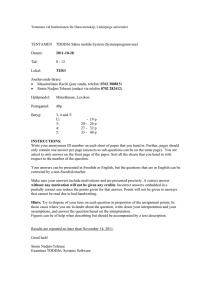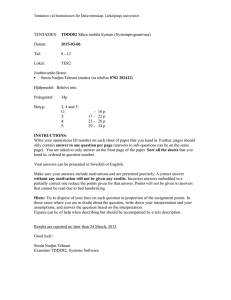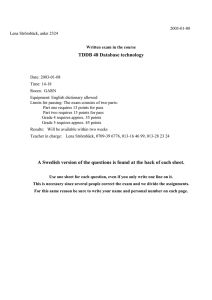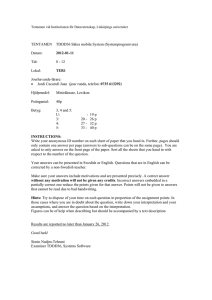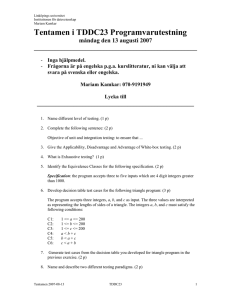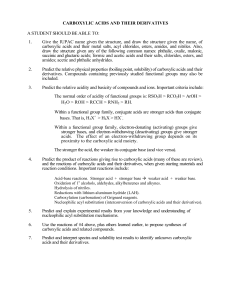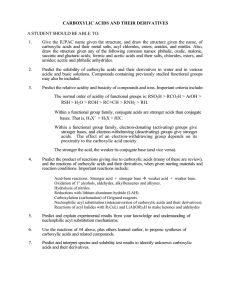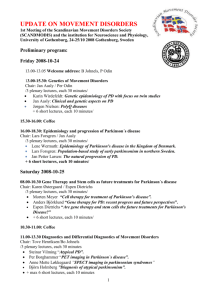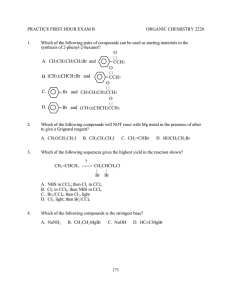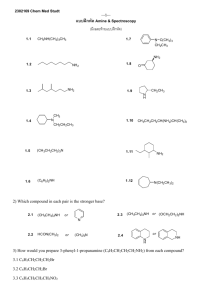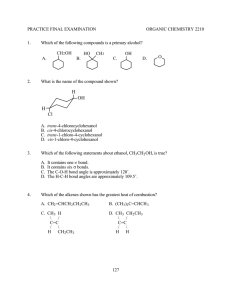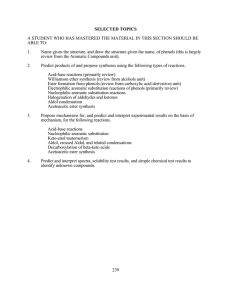ALDEHYDES AND KETONES
advertisement
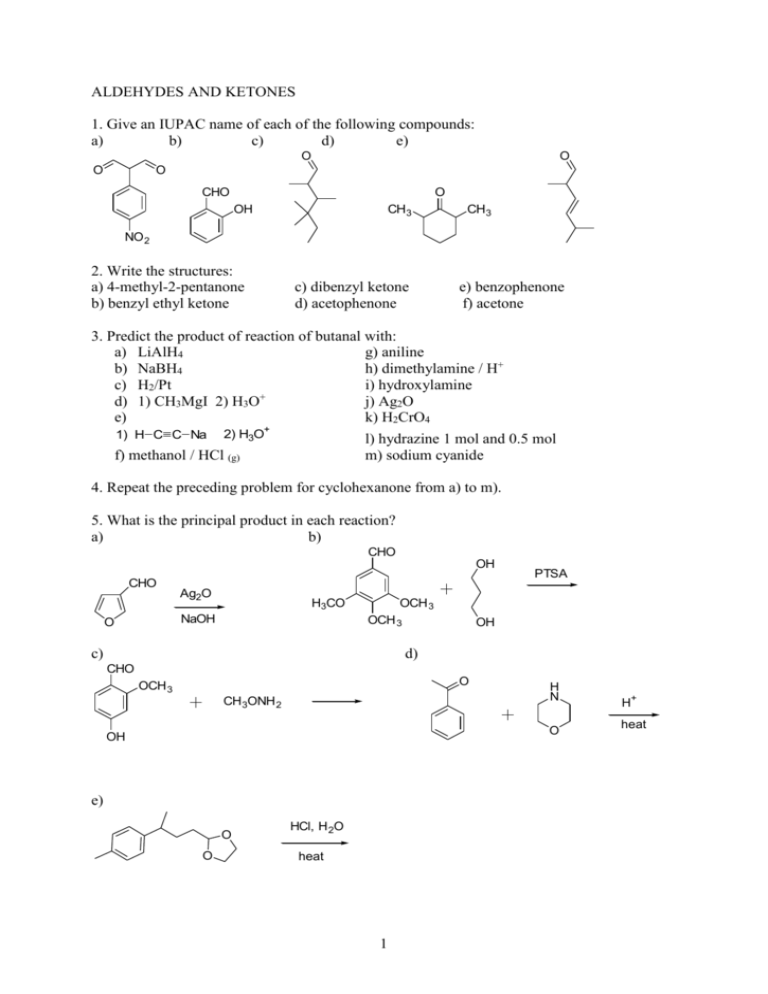
ALDEHYDES AND KETONES 1. Give an IUPAC name of each of the following compounds: a) b) c) d) e) O O O O CHO O OH CH3 CH3 NO 2 2. Write the structures: a) 4-methyl-2-pentanone b) benzyl ethyl ketone c) dibenzyl ketone d) acetophenone e) benzophenone f) acetone 3. Predict the product of reaction of butanal with: a) LiAlH4 g) aniline b) NaBH4 h) dimethylamine / H+ c) H2/Pt i) hydroxylamine d) 1) CH3MgI 2) H3O+ j) Ag2O e) k) H2CrO4 1) H C C Na 2) H3O+ l) hydrazine 1 mol and 0.5 mol m) sodium cyanide f) methanol / HCl (g) 4. Repeat the preceding problem for cyclohexanone from a) to m). 5. What is the principal product in each reaction? a) b) CHO OH CHO Ag2O H3CO NaOH O PTSA OCH 3 OCH 3 c) OH d) CHO O OCH 3 CH 3ONH 2 H N O OH e) O O HCl, H 2O heat 1 H+ heat 6. Using ethanol as the source of all the carbon atoms, describe efficient syntheses of each of the following, using any necessary organic and inorganic reagents. a) O O O O b) H d) 3-butyn-1-al CH 3 e) acetaldehyde diethyl acetal c) 1-butanol f) 3-butyn-2-ol 7. The following five-step synthesis has been reported in the chemical literature. Suggest reagents appropriate for each step. O O O O O O O OH O O H O CH 3 O CH 3 O O O O 8. Synthesis of each of the following compounds have been reported in the chemical literature. Using the indicated starting material and any necessary organic or inorganic reagents, describe short sequences of reactions that would be appropriate for each transformation. Ph Ph a) from O CH 3 b) 1,1,5-trimethylcyclononane from 5,5-dimethylcyclononanone CH 3 c) from o-bromotoluene and 5-hexenal Cl d) CH 3 O CH 3 from 3-chloro-2-methylbenzaldehyde 2
